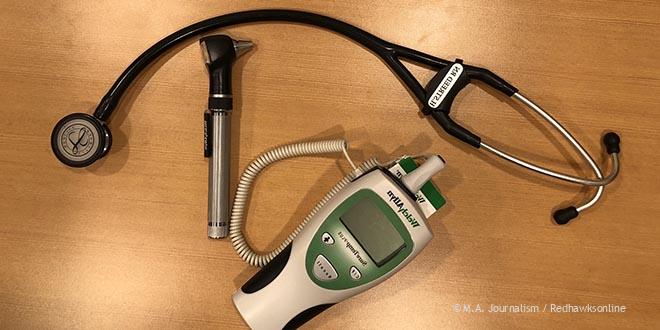Robots help with nurse worker shortage
“People are feeling depressed and lonely. Robots can offer that social interaction. They will come and tell jokes, they will interact, they will have small conversations, they will administer reminiscence therapy. These little guys will teach them how to do easy-going exercises,” said Arshia Khan, UMD Computer Science Professor. (This quote is from Fox News after an unsuccessful try to contact Khan for an interview.)
Monarch Healthcare, like many other nursing homes, has a worker shortage because of Covid-19. These robots will help by becoming nurses and assisting patients. The purpose of the medical robots is simple, to help. They will be doing jobs that don’t need a human touch. For example, they will pick up lunch trays and put the medicine in cups.
“So then it’ll help alleviate because there is a staffing shortage. And then we’ll be able to focus more on direct patient care, rather than those additional tasks,” said Jessica Miska, the administrator of the Monarch location in Anoka, MN.
PUMA 560, a robotic arm that assisted with neurosurgery, was the first medical robot recorded in 1985. It would stick a needle into the brain to take a biopsy which examines tissue for disease. A human hand did guide the robot meaning the robot wasn’t working by itself. According to Nancy Cripe, who teaches Biology, CIS Human Anatomy and Physiology at the Upper School, the future will look the same as the past with the idea of humans collaborating with robots, just more advanced.
“We’re going to see so many more highly calibrated tools, robotic tools that humans can use to remove tumors, but say very precisely, so you don’t leave any of the tumor behind,” said Cripe. The future could also hold negative outcomes.
“The negative future, I suppose, would be that human interactions are diminished with patients, and it becomes much more mechanical and robotic,” Cripe said, “but healthcare is humans caring for other humans.”Monarch has begun to make changes so things can run smoothly.
Miska said, “There’s a lot of education policies training that I have to implement like staff training.” Residents and families will be notified of the arrival of the robots. Nurse Tara Phillips, who works at Monarch Healthcare in Anoka, Mn is eager to have an extra helping hand with her workload.
“I’m kind of glad that it’s on a smaller end. It doesn’t have to be a major hospital. So glad that we got an opportunity to do it,” said Phillips. This shows that the purpose of these robots isn’t publicity but public service. However, Cripe believes that the robots will be cooperating with the humans. Meaning the robots won’t come over and pluck Philips’ job away from her.
Cripe said, “I don’t think we’ll ever have a time where robots will be doing all the operations. I think it’s always going to be this great partnership between humans to use our robotics tools to do things humans can’t do on their own.” With this new initiative comes new possibilities for the Monarch’s future.
Phillips said, “It [the future] depends on what the robots can handle day to day and what eventually down the road.” Job details for nurses will change when the program takes effect.
“Nurses will be more patient-centered and slow down and have these conversations, build those relationships with patients and make them feel like they’re more at home,” said Miska. “I think that’s kind of the end goal.”

